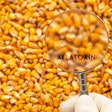
The Alltech Mycotoxin Management team analyzed corn, spring wheat, barley and triticale samples from across Canada as part of the 2016 Alltech Canada Harvest Analysis.
The results indicated a high risk for the presence of mycotoxins in total mixed rations (TMR), distillers dried grains with solubles (DDGS) and silage. On average, 3.8 different mycotoxins were present in the TMR and DDGS samples collected.
The 2016 Alltech Canada Harvest Analysis tested 45 TMR samples from across Canada, from June 1 to November 30, at the company’s ISO-accredited Alltech 37+ mycotoxin analytical services laboratory in Nicholasville, Kentucky. The report showed that only 2 percent of the samples contained no mycotoxins. Two percent of the samples contained eight to nine mycotoxins, 20 percent contained six to seven mycotoxins, 29 percent contained four to five mycotoxins, 29 percent contained two to three mycotoxins and 18 percent contained one mycotoxin. Type B trichothecene mycotoxins (including DON) were present in 80 percent of the samples, and fusaric acid was present in more than half.
Deoxynivalenol (DON) is a type B trichothecene mycotoxin and was the most prevalent mycotoxin found in new-crop corn silage as well as spring wheat, barley and triticale samples. High levels of fusaric acid were also present in the samples collected. The combination of DON and fusaric acid can result in a high risk equivalent factor (REQ) that can be toxic to animals. Producers should observe their herd and monitor their animals for poor feed intake as well as reduced milk or meat production.
“Mycotoxin issues aren’t limited to growing regions with contaminated crops,” said Dr. Max Hawkins, nutritionist for the Alltech Mycotoxin Management team. “Mycotoxins move around quickly and spread contamination, so ensure that you sample your TMR and silage regularly and monitor your animals.”

















